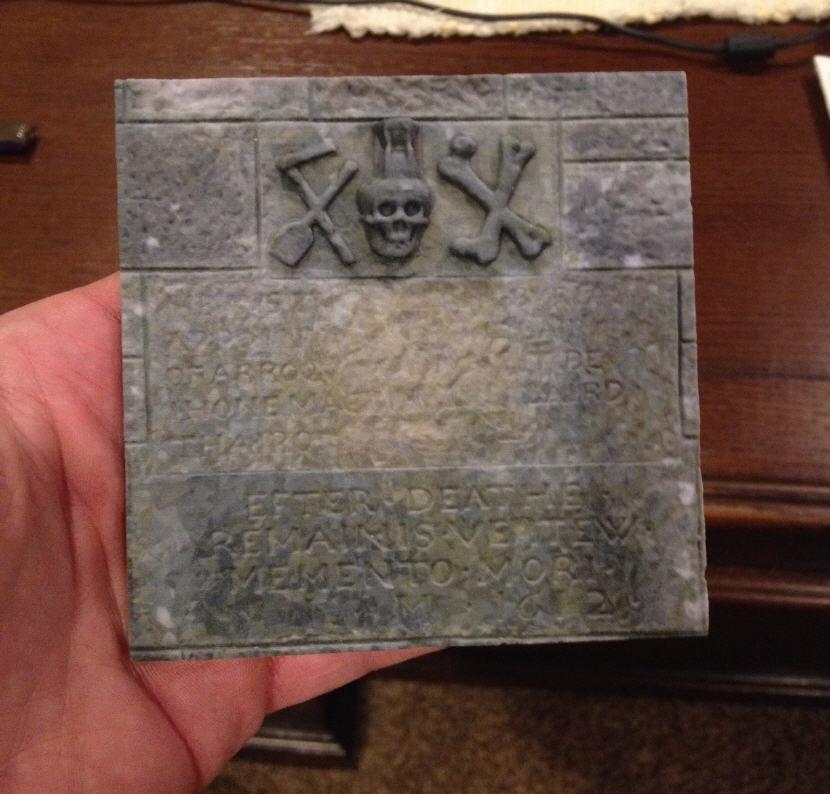The way that this world works is that objects are built up, and then thanks in part to both Mother Nature and human interaction, they break down and return to the very earth that they came from. This is true with just about everything that exists on Earth, whether it is a building such as the Colosseum in Rome, a tree growing in your backyard, or a stone that when initially carved appeared to be indestructible. Even the most “indestructible” objects end up finding the forces of nature too much to handle, given enough time.
One man, named Preston McFarland, discovered that 3D printing was a way in which he could not only preserve a piece of his family history, but also make it available for his relatives back home to see. This story starts back in the year 1612, when the MacFarlane family in Scotland had their family stone carved out. This stone has remained intact for the past four centuries, although some wear and decay is quite noticeable.
Recently, Preston McFarland had a chance to visit Scotland, where he was able to study his ancestry, including some of the buildings that were left behind. One such building, the Luss Church, is where the 4′ x 6′ MacFarlane Stone is located. It is placed within one of the exterior walls of the church which has been rebuilt three times in the past 400 years. Each time this stone has survived, but like mentioned previously, everything will eventually face its final day. Because of this McFarland decided to create a replica of this piece of family history. To do this, he used a combination of photogrammetry and 3D printing to recreate a scaled down version of the old stone.
“Photogrammetry combined with 3D printing is an incredibly special technology which can be used to permanently capture and preserve the real world,” explained McFarland. “3D printing has allowed me to bring some of that homeland and history back with me. This makes it easier for people to discover, understand, and fall in love with their heritage. They can now hold in their hand a scaled reproduction of a building or some other artifact.”
Photogrammetry is a method of taking photographs of a 3-dimensional object and then stitching these photos together in such a way that a 3D model can be created. Using his camera, along with software called Agisoft, McFarland was able to digitally recreate the MacFarlane stone in just about 60 hours.
After creating the model, McFarland took it to a company that we have written about in the past, WhiteClouds, to have it 3D printed on a high quality industrial level 3D printer. Using a 3D Systems ProJet 660Pro, WhiteClouds was able to recreate a replica that not only looked like the original (only smaller) but also felt quite similar as well. Using a gypsum-based powder to print the stone out, layer by layer, they were left with a final replica which had a sandstone-like texture to it.
3D printed replica (photo by WhiteClouds)
WhiteClouds made two versions of the MacFarlane stone: a 4-inch version and a 10-version. In the end, McFarland was extremely pleased with the results.
“Even more importantly, it creates a permanent record that will be invaluable in the centuries to come,” he said. “Long after the original has crumbled into dust or been destroyed, my descendants will be able to reproduce and handle this part of their story.”
This is just one way in which 3D printing and 3D modeling through technology such as photogrammetry will help in the preservation of the world’s artifacts. We have seen museums doing this, and now that the technology is so readily available it is being done on an individual level as well.
3D printed replica (photo by WhiteClouds)
What do you think of the use of photogrammetry, in combination with 3D printing, like that done by WhiteClouds, in preserving ancient artifacts? Should more institutions and individuals be taking part in this preservation method? Discuss in the 3D Printing to Preserve History forum thread on 3DPB.com.
3D printed replica (photo by WhiteClouds)
